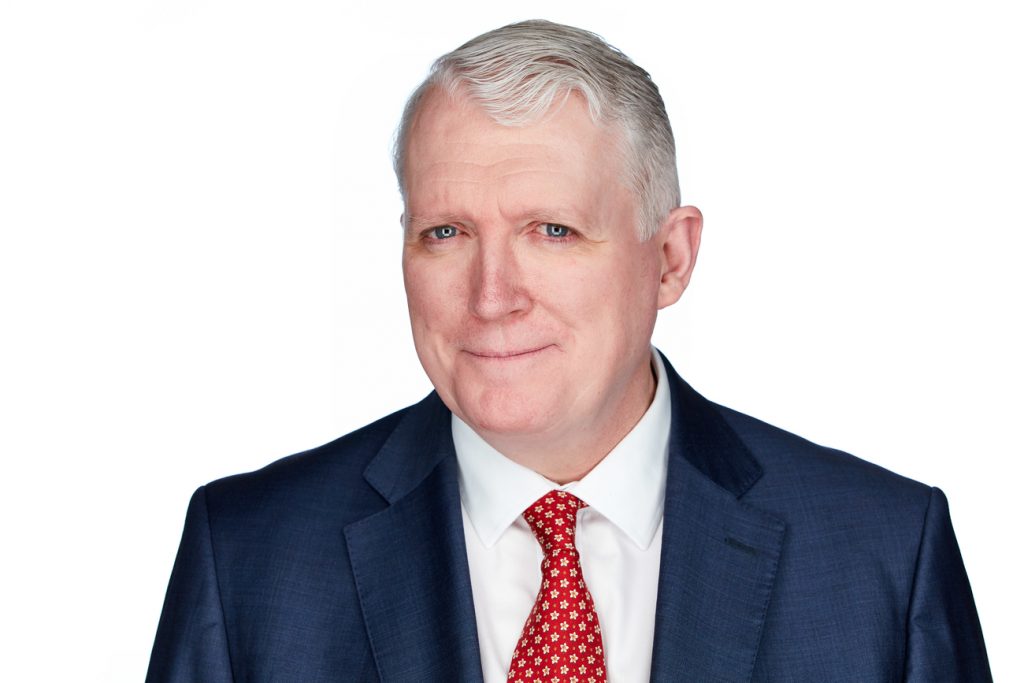We shouldn’t take customer-first exaltations at face value. They are common. But true customer-led success is not, according to Seán Meehan and Charlie Dawson
What leaders say (and perhaps think) their company does and what it actually does can often be at odds. There is often a saying/doing gap.
When we say customer-led, we mean being guided by what customers value – the underlying problems they are trying to solve or the outcomes they want – and then finding new and better ways to create this value, solve these problems or achieve these outcomes, leading in a market not following, inventing not benchmarking.
When companies do this well, their customers do well – they, or we, get a better quality of life, better solutions, lower costs of all kinds – financially and also savings in effort, time, emotional pain, attention and more. And it’s not just customers that benefit; companies do well too – reaping significant rewards from the increased value they provide.
So how did some of the most successful customer-centric companies achieve this and what can we learn from them?
Amazon – Build the shared belief that we succeed when we do what matters to customers, not us
In a letter to Shareholders in April 2017 Jeff Bezos conveys a vivid picture of what being customer-led looks like and what it takes: ‘There are many ways to centre a business. You can be competitor focused, you can be product focused, you can be technology focused, you can be business model focused, and there are more. But in my view, obsessive customer focus is by far the most protective of Day 1 vitality.’
He continually reminds employees that Amazon must always stay as it was on day one – not resting on its laurels, keeping on driving forward with the energy and vision of a start-up. Amazon has created a shared belief amongst colleagues that there is always a better way, it just has to be found or invented.
This sounds easy but it isn’t. Often what is in customers’ interests is not, in the short term, obviously good for the business, and the long-term return is uncertain ahead of trying. Two examples from Amazon show this well:
- The business decided to allow other sellers to offer products on its Amazon Marketplace platform, in competition with its own offering. And not just on the platform but on the ‘buy’ page giving customers easy access to a range of prices and sometimes new versus used versions of a product. Amazon’s category managers who have to buy product and sell it before it goes out of date thought this was a terrible idea. But it happened and worked very well for Amazon overall
- To the bewilderment of publishers in particular, Amazon chose to display all product reviews, good and bad. Clearly this could lead to reduced sales, but Amazon took the step in the interest of building customer trust over the longer term.
Tesco – Create ‘Moments of Belief’
The remarkable rise of Tesco, which began life as a market stall in East London and went on to become the recipient of £1 for every £7 spent on the British high street and the third largest retailer in the world, is a story of why customer-led beliefs matter. Tesco’s growth was powered by courage and that same belief that doing the right thing for customers was also the right thing for the business.
Tesco’s customer-led beliefs were grown especially by CMO Terry Leahy, who believed ‘the customer should drive the entire business’. Under his guidance, Tesco created their first customer-led initiative with one-in-front queuing – promising that if any line had more than two customers waiting, an extra checkout would be opened. The cost was an estimated £60 million a year and the benefit to the customer was clear, but the benefit to the business was less so. One-in-Front was what we call a ‘Moment of Belief’ – a commitment to a customer-led innovation that unmistakably signalled to the organisation the leadership’s belief that being customer-led drives business success. When people in the business saw that it did work for both customers and for Tesco, their belief that doing another similar thing grew. Offering bag packing followed, worked, and led to a third, and so on.
Belief grew and deepened as more happened to illustrate to the organisation what it meant to ‘think as a customer,’ it was a turning point. Tesco was leading, not following. It followed these first successes with many more, from Clubcard to Tesco.com, until the stream of successful customer-led actions coalesced into a shared conviction that the organisation exists for customers first and succeeds by putting customers first. It maintained its customer-led, outside-in orbit for three decades – a remarkable feat.
We should add at this point that even with such astounding success, we found that customer-led beliefs remain vulnerable to more conventional self-centred views of running a business. For a combination of perfectly natural reasons, Tesco subsequently lost their outside-in zeal, performance flagged and they started to try hitting the numbers more directly, ending up in court when that got out of hand.
easyJet – ‘We need to work with customers, not against them’
In 2010, when easyJet’s new CEO, Carolyn McCall proposed making customers’ awful experiences flying with discount airlines better, the internal audience was suspicious rather than receptive. The stress of boarding was one of the most painful parts of customers’ experience, with unallocated seating meaning passengers had a race to get a good seat and for parties to sit together. The fresh eyes on McCall’s new customer-focussed team identified the introduction of allocated seating as an opportunity to make a statement, to take a giant leap to improve the flying experience and in so doing show that easyJet could take a lead in the no-frills airline industry, working with customers not against them.
The idea did not go down well with operations, who were convinced it couldn’t be done in the short window they had to turn each plane around after landing. Looking for inspiration from organisations that know all about fast turnarounds, easyJet turned to Formula 1 team McLaren. Their ah-ha moment was the recognition that while it took passengers longer to find their allocated seats, easyJet didn’t need to follow the convention of using only one of the aircraft’s doors to get passengers in and out when an airport had an air bridge. Instead easyJet hit on the simple idea of always boarding passengers through both front and rear doors simultaneously. Of 800,000 passengers surveyed, 70% said they preferred allocated seating.
Allocating seating was a symbolic move that completely turned perceptions of the business around by 180 degrees. It kick-started a succession of customer-led innovations from tackling delays and cancellations to lobbying against ‘Gotcha pricing’. With these significant changes to easyJet’s belief system and business model came some striking results. McCall presided over a remarkable turnaround, the share price moving from £4 to £19 between 2010 and 2015, revenue from £3 billion to £5 billion and net profit from £121 million to £548 million. And this was all achieved in the spirit of a growing belief that being customer-led meant the business worked better, not worse.
Handelsbanken – Customer-led beliefs are good for customers and business
Handelsbanken is an extraordinary organisation. It is probably the most successful bank you’ve never heard of. It is one of Sweden’s leaders with over 750 branches in six home markets (Sweden, Denmark, Norway, Finland, the Netherlands and the UK), a presence in the world’s most significant economies and nearly 12,000 employees. It has over 200 branches in Britain following its launch in 1982 and a close to a £22 billion loan book.
Customer-led beliefs are key to its success. It is low profile and distinctly idiosyncratic. It doesn’t do any advertising beyond local promotion. There are no bonuses, no budgets, no sales targets, no call centres. There is not a centralised credit approval process where the computer, or a committee, has the sole authority to say yes or no. Every decision needs local support. Each bank manager of each of Handelsbanken’s individual branches takes decisions about local customers – no algorithm, but human judgement instead.
Handelsbanken shows that customer-led beliefs are clearly good for customers are also good for business. Handelsbanken branch staff serve customers well, they think about what helps and they cut out what doesn’t to increase efficiency, they lend prudently when they understand the risks, and the business thrives. Handelsbanken’s overall financial goal is to have better profitability than the average of peer competitors in its home markets, a goal it has achieved every year without exception since 1973.
AO – Being customer-led means winning big
AO.com, a start-up online retailer selling white goods, grew to a valuation of more than £1 billion in 15 years, propelled by a number of bold Moments of Belief that transformed the company into a serious customer-led success. AO.com started with quite a basic customer-led premise – better prices achieved by selling white goods online. Founder John Roberts saw an opportunity in the growing world of internet retailing, and he believed, controversially at the time, that big ticket items such as fridges and washing machines could be sold online as easily as CDs and books. In the early days, when most felt this couldn’t be done, AO allowed its intrepid customers to save 35–40%. But, as the idea of e-commerce took off, Roberts realised he didn’t have an advantage that would last.
So, he made a big bet. His belief was that being able to offer next day delivery on the whole AO white goods range would be a breakthrough, a proposition that would be hard to match. He invested in AO’s own warehousing, AO’s own stock not shared with any other retailers, and the acquisition of a warehousing and delivery operation called Expert Logistics. This meant AO could offer bulletproof one-day delivery for the first time to customers, promising that every product listed could be in the customer’s home the following day, wherever in the UK they lived. The next big Moment of Belief saw AO offering its customers free returns for any reason at all for 100 days after purchase (the Finance Director initially assumed this was mad, but it turns out people only return something so big for very good reasons). And the third was perhaps the most culturally significant – giving AO’s customer service teams complete freedom to do what they felt was right in sorting out customers’ issues and to look for ways to be memorable and thoughtful too. This new approach meant that 95% of customer issues were dealt with immediately and usually with a warmth and character that customers loved.
The string of Moments of Belief built a customer-led business that won big. In 2014, AO listed on the London Stock Exchange, valued at more than £1 billion with John Roberts’ share valued at more than £400 million.

Charlie Dawson is the founder of The Foundation, a London-based consultancy that helps organisations create customer-led success.
Seán Meehan is the Martin Hilti Professor of Marketing and Change Management at IMD Business School, Lausanne, Switzerland.

The Customer Copernicus: How to be Customer-Led by Charlie Dawson and Seán Meehan is published by Routledge, available from Amazon and leading international booksellers.



